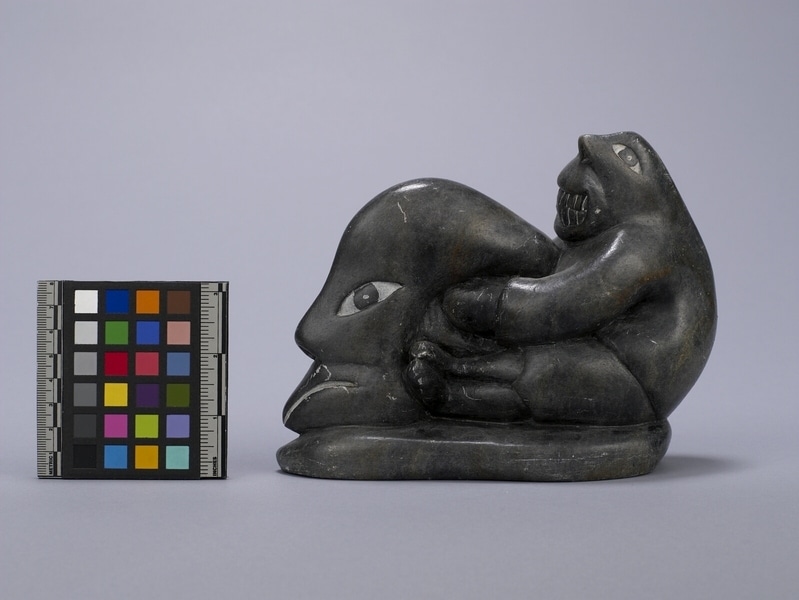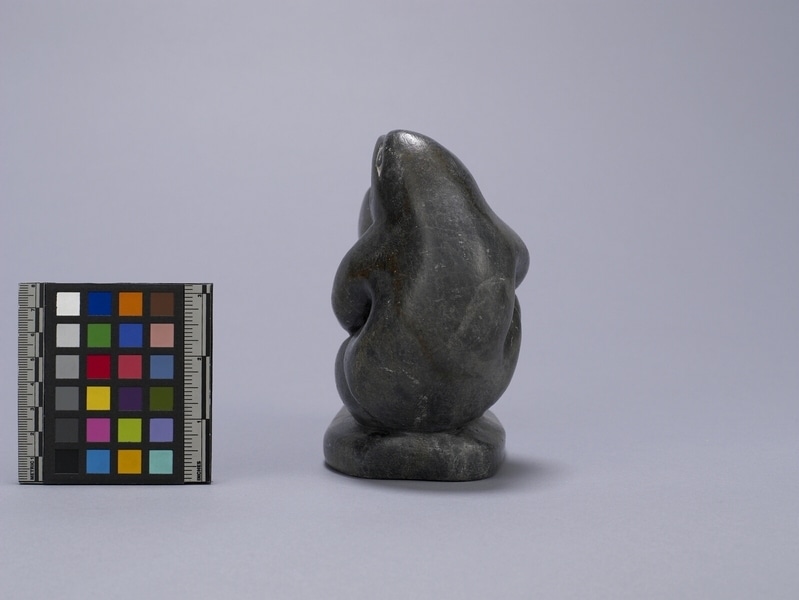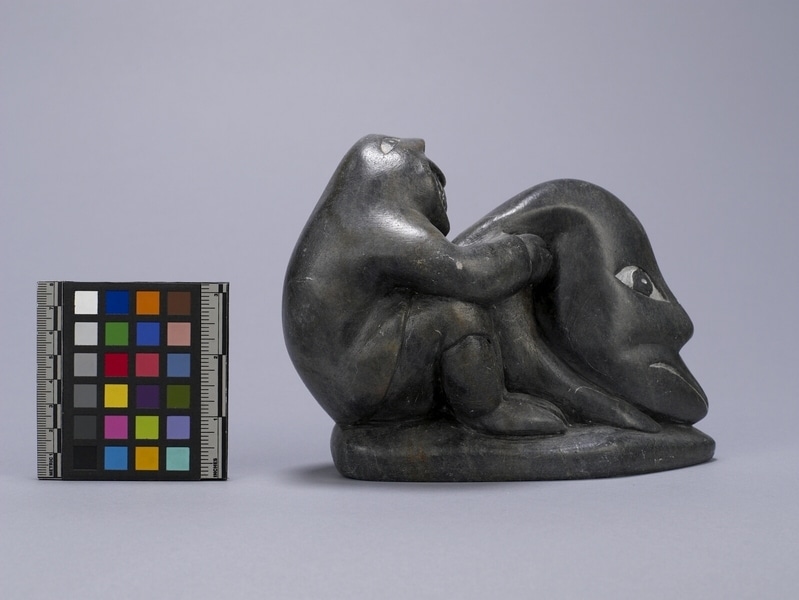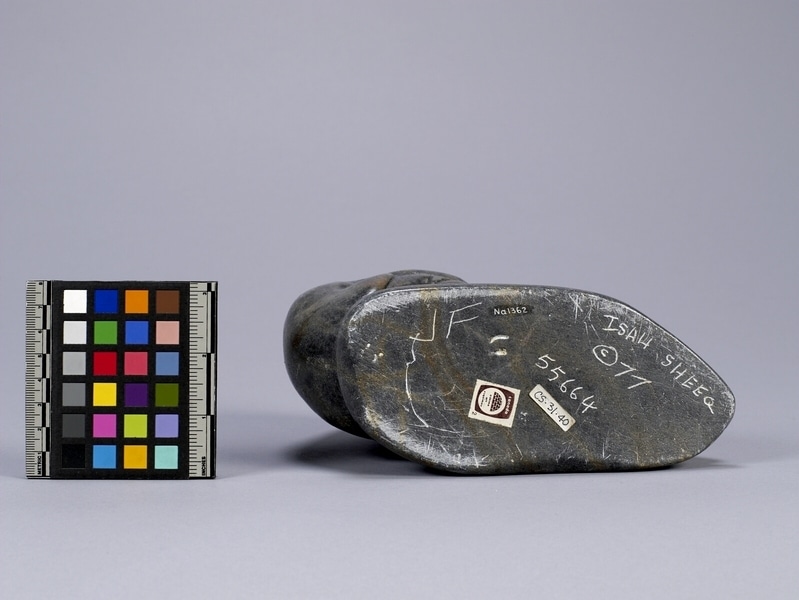Carving Item Number: Na1362 from the MOA: University of British Columbia





Description
Stylized seated figure with exaggerated facial features is behind and holding a creature with a larger flowing face and amorphous body beneath. Seated figure has two legs on either side of creature's feet. On one side they are propped against the creature's face. Seated figure has an exaggerated grin with two teeth rows, triangular nose with triangular nostrils, large oval eyes with round centres and a short forehead with head continuing straight into curved back. Creature has a lozenge-shaped forehead flowing back into seated figure, large eyes as in figure, similar nose and v-shaped mouth. Feature details are in light grey, unpolished stone, the rest of the sculpture is coated with a shellac-like resin. 'Isah Sheeg 77 55664 f' and a copyright mark are inscribed on the bottom. Some nicks and scratches show light grey.
History Of Use
Contemporary Inuit sculpture produced for the art market began in the 1950's in response to a very successful sale, by the Canadian Handicraft Guild in Montreal in 1949, of pieces collected by James A. Houston on the east coast of Hudson Bay. The Inuit co-operatives developed by 1959 and a central marketing agency was established in 1965. Carving continues to be a major source of income in the Eastern Canadian Arctic, an area which has undergone major social and economic changes, especially since World War II. There has been a steady growth in permanent settlements during the last half of this century which has made large scale carving in stone feasible. Traditionally, carving materials were mainly bone, antler, and ivory, because of their light weight, strength, and durability. Heavier and more fragile stone was used primarily for lamps and cooking vessels. Although Inuit sculpture is often referred to as 'soapstone' sculpture, in fact, less than half of the stone used is soapstone (a high-grade talc or steatite). Other stones commonly used include serpentine, olivine, periodite, chrysolite, and others. In the early years of the industry it was possible to identify where a carving came from by the specific type of stone used, however, in recent years stone is traded on a wider, regional basis. Whale bone, antler, walrus tusk ivory, and a variety of other materials are also used by Inuit carvers. Themes in Inuit sculpture are based on personal experiences and beliefs, derive from oral traditions, mythology, as well as from narrative and figurative themes depicting arctic fauna and scenes of traditional Inuit life. Regional, community, and individual styles are also apparent.
Narrative
Balshine family collection.
Cultural Context
contemporary art
Item History
- Made by Isah Qumalu Sivuarapi (Maker) in Puvirnituq, Quebec, Canada during 1977
- Collected between 1969 and 1982
- Owned by Lorne Balshine before January 25, 1988
- Received from Lorne Balshine (Seller), Finning Ltd. (Funding source) and University Purchase (Funding source) on January 25, 1988
What
Who
- Culture
- Inuit
- Creator
- Isah Qumalu Sivuarapi (Maker)
- Previous Owner
- Lorne Balshine
- Received from
- Lorne Balshine (Seller), Finning Ltd. (Funding source) and University Purchase (Funding source)
Where
- Holding Institution
- MOA: University of British Columbia
- Made in
- Puvirnituq, Quebec, Canada
When
- Creation Date
- during 1977
- Collection Date
- between 1969 and 1982
- Ownership Date
- before January 25, 1988
- Acquisition Date
- on January 25, 1988
Other
- Item Classes
- carvings & sculpture
- Condition
- good
- Current Location
- Case 43
- Accession Number
- 1263/0192